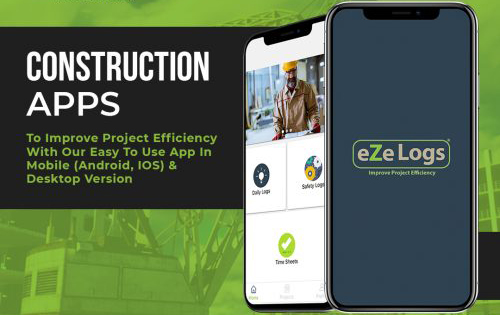Ensuring success in construction projects is a complex process that requires careful planning and management. Subcontractor management is an essential part of this process, as it helps to ensure that the project is completed on time and within budget. Subcontractor management involves selecting the right subcontractors, managing their performance, and ensuring that they are meeting the project requirements.

This article will discuss the importance of subcontractor management in construction projects and how it can help ensure success. It will also provide tips on how to effectively manage subcontractors and ensure that the project is completed successfully.
Importance of Subcontractor Management in Construction Projects
Subcontractor management is an essential part of any construction project. It is important to ensure that subcontractors are managed effectively in order to ensure the successful completion of the project.
Subcontractor management involves the coordination of all subcontractors involved in the project. This includes ensuring that all subcontractors are aware of their roles and responsibilities, as well as any changes that may occur during the project. It also involves ensuring that all subcontractors are working together in a timely and efficient manner.
Subcontractor management also involves monitoring the progress of the project and ensuring that all subcontractors are meeting their deadlines. This includes ensuring that all subcontractors are following the project timeline and that any changes are communicated to all parties involved.
Subcontractor management also involves ensuring that all subcontractors are following safety protocols and that all materials and equipment are being used correctly. This includes ensuring that all subcontractors are using the correct tools and equipment for the job, as well as ensuring that all safety protocols are being followed.
Finally, subcontractor management also involves ensuring that all subcontractors are being paid on time and that all invoices are being processed correctly. This includes ensuring that all subcontractors are being paid the correct amount and that all invoices are being processed in a timely manner.
Overall, subcontractor management is an essential part of any construction project. It is important to ensure that all subcontractors are managed effectively in order to ensure the successful completion of the project.
Essential Skills for Effective Subcontractor Management
1. Communication: Effective subcontractor management requires clear and consistent communication. This includes setting expectations, providing feedback, and responding to inquiries in a timely manner.
2. Documentation: Keeping accurate records of all subcontractor activities is essential for successful subcontractor management. This includes contracts, invoices, and any other relevant documents.
3. Negotiation: Negotiating terms and conditions with subcontractors is an important part of subcontractor management. This includes setting payment terms, deadlines, and other relevant details.
4. Risk Management: Subcontractors can bring a variety of risks to a project. It is important to identify and manage these risks to ensure the success of the project.
5. Quality Control: Quality control is essential for successful subcontractor management. This includes setting standards, monitoring performance, and providing feedback.
6. Conflict Resolution: Conflict between subcontractors and the main contractor can arise. It is important to have a process in place to resolve these conflicts in a timely and effective manner.
7. Performance Evaluation: Regularly evaluating subcontractor performance is essential for successful subcontractor management. This includes setting goals, measuring progress, and providing feedback.
8. Cost Management: Managing costs is an important part of subcontractor management. This includes setting budgets, tracking expenses, and negotiating prices.
Best Practices for Subcontractor Management in Construction Projects
1. Establish Clear Expectations: Before beginning a construction project, it is important to establish clear expectations for subcontractors. This includes outlining the scope of work, timeline, budget, and any other relevant information.
2. Vet Subcontractors: It is important to vet subcontractors before hiring them. This includes verifying their qualifications, references, and insurance coverage.
3. Set Up a Contract: Once a subcontractor has been selected, it is important to set up a contract that outlines the scope of work, timeline, budget, and any other relevant information.
4. Monitor Progress: It is important to monitor the progress of the subcontractor’s work to ensure that it is being completed on time and within budget.
5. Communicate Regularly: Regular communication with the subcontractor is essential to ensure that any issues or concerns are addressed in a timely manner.
6. Provide Feedback: Providing feedback to the subcontractor on their performance is important to ensure that they are meeting expectations.
7. Resolve Disputes: If there are any disputes between the subcontractor and the contractor, it is important to resolve them in a timely manner.
8. Pay Promptly: It is important to pay subcontractors promptly to ensure that they are motivated to complete the project on time and within budget.
9. Document Everything: It is important to document all communication, progress, and payments to ensure that there is a record of everything that has been done.
10. Follow Up: Following up with the subcontractor after the project is complete is important to ensure that any issues have been addressed and that the subcontractor is satisfied with the outcome.
Technology and Tools for Subcontractor Management

Subcontractor management is an important part of any construction project. It requires careful planning and organization to ensure that subcontractors are properly managed and that the project is completed on time and within budget. Fortunately, there are a variety of tools and technologies available to help streamline the subcontractor management process.
One of the most important tools for subcontractor management is a project management software. This type of software allows you to track the progress of the project, assign tasks to subcontractors, and monitor their performance. It also provides a centralized platform for communication between the project manager and the subcontractors.
Another useful tool for subcontractor management is a document management system. This system allows you to store and organize all of the documents related to the project, such as contracts, invoices, and reports. This makes it easier to keep track of all the paperwork associated with the project and ensures that all documents are up to date.
Finally, a good subcontractor management system should also include a payment system. This system allows you to easily track payments to subcontractors and ensure that they are paid on time. It also allows you to set up automated payment reminders to ensure that subcontractors are paid on time.
These are just a few of the tools and technologies available to help streamline the subcontractor management process. By utilizing these tools, you can ensure that your project is completed on time and within budget.
Strategies for Overcoming Common Subcontractor Management Challenges

1. Establish Clear Communication: Establishing clear communication with your subcontractors is essential for successful subcontractor management. Make sure to provide clear instructions and expectations for each project, and ensure that all subcontractors understand the scope of the project and the timeline for completion.
2. Set Clear Expectations: Establishing clear expectations for subcontractors is key to successful subcontractor management. Make sure to provide detailed instructions and expectations for each project, and ensure that all subcontractors understand the scope of the project and the timeline for completion.
3. Monitor Performance: Regularly monitor the performance of your subcontractors to ensure that they are meeting the expectations set for them. If any issues arise, address them quickly and effectively to ensure that the project is completed on time and within budget.
4. Establish a Payment System: Establishing a payment system for subcontractors is essential for successful subcontractor management. Make sure to provide clear instructions and expectations for payment, and ensure that all subcontractors understand the payment terms and timeline.
5. Develop a Relationship: Developing a relationship with your subcontractors is key to successful subcontractor management. Make sure to foster an open and collaborative environment, and ensure that all subcontractors feel comfortable communicating with you.
6. Utilize Technology: Utilizing technology can help streamline the subcontractor management process. Consider using project management software to track progress, manage deadlines, and communicate with subcontractors.
7. Provide Feedback: Providing feedback to subcontractors is essential for successful subcontractor management. Make sure to provide timely and constructive feedback to ensure that all subcontractors understand the expectations and are meeting them.
Final Thoughts
In conclusion, subcontractor management is an essential part of ensuring success in construction projects. By properly managing subcontractors, project managers can ensure that the project is completed on time and within budget, while also ensuring that the quality of the work is up to the standards of the project. Subcontractor management also helps to reduce the risk of disputes and delays, which can have a significant impact on the success of the project. By taking the time to properly manage subcontractors, project managers can ensure that their projects are successful.


